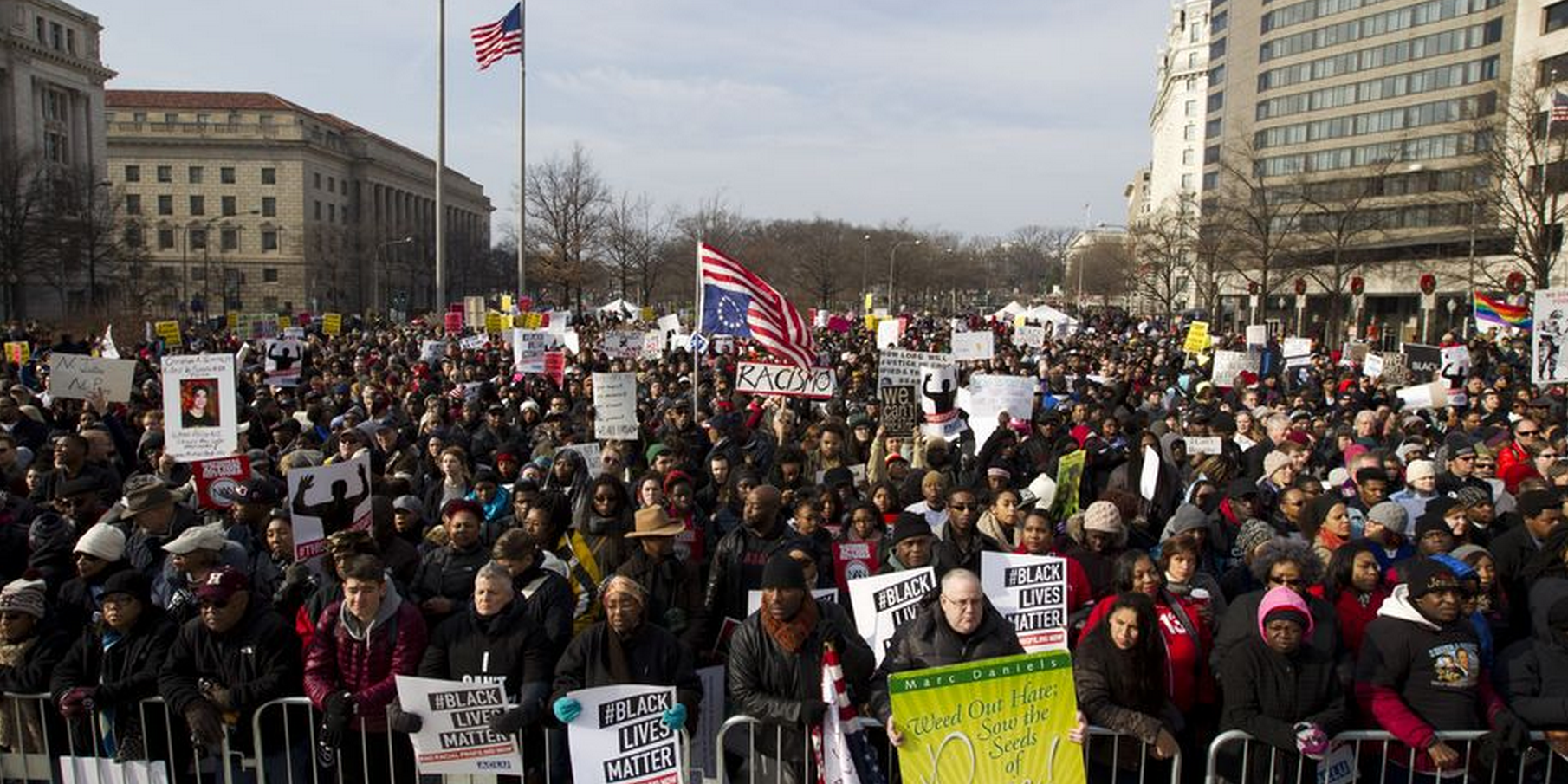WASHINGTON — Thousands of protesters marched down iconic Pennsylvania Avenue on Saturday, arriving at the Capitol to call attention to the deaths of unarmed black men at the hands of police and call for legislative action.
Videos by Rare
“What a sea of people,” said Lesley McSpadden, the mother of Michael Brown, an 18-year-old killed in Ferguson, Missouri, in August. “If they don’t see this and make a change, then I don’t know what we got to do. Thank you for having my back.”
Also speaking were civil rights leader The Rev. Al Sharpton and family members of Eric Garner, killed by an officer in New York in July, and Tamir Rice, a 12-year-old killed in Ohio as he played with a pellet gun in a park.
“Members of Congress, beware we’re serious …,” Sharpton said. “When you get a ring-ding on Christmas, it might not be Santa. It may be Rev. Al coming to your house.”
Garner’s mother, Gwen Carr, called it a “history-making moment.”
“It’s just so overwhelming to see all who have come to stand with us today,” she said. “I mean, look at the masses. Black, white, all races, all religions. … We need to stand like this at all times.”
Several speakers asked the crowd to chant, “I can’t breathe.” Garner, 43, had gasped those words before his death while being arrested for allegedly selling loose, untaxed cigarettes. Some protesters also wore those words on shirts.
Other speakers called for a chant of “Hands up, don’t shoot.”
Just before the crowd marched to the Capitol, the rallying was interrupted briefly by more than a dozen protesters who took the stage with a bullhorn. They announced that they were from the St. Louis area and demanded to speak.
“This movement was started by the young people,” said Johnetta Elzie, who ultimately was allowed by rally organizers to speak.
Organizers called the interruption unnecessarily divisive. But some in the Missouri group, mostly in their 20s, said they were disappointed and found the rally staid and ineffective.
“I thought there was going to be actions, not a show. This is a show,” Elzie said.
Protests — some violent — have occurred around the nation since grand juries last month declined to indict the officers involved in the deaths of Brown and Garner. Before the crowd started marching, Sharpton directed, “Don’t let no provocateurs get you out of line. … We are not here to play big shot. We are here to win.”
Then, blocks of tightly packed people moved through the city. Organizers had predicted 5,000 people, but the crowd appeared to far outnumber that.
Politicians and others have talked about the need for better police training, body cameras and changes in the grand jury process to restore faith in the legal system.
Terry Baisden, 52, of Baltimore said she is “hopeful change is coming” and that the movement is not part of a fleeting flash of anger.
She said she hasn’t protested before but felt compelled to because “changes in action, changes in belief, happen in numbers.”
Murry Edwards said he made the trip to Washington from St. Louis because he wants to make sure the momentum from the movement in Ferguson reaches a national stage.
“This is the national march,” Edwards said. “We have to get behind the national movement.”
Sheryce Holloway, a recent graduate from Virginia Commonwealth University in Richmond, attended a smaller gathering outside Robert F. Kennedy Stadium in Washington ahead of the main rally. She said she also has been participating in protests at her alma mater.
Holloway said the goal of the protests is “ending blue-on-black crime. Black lives do matter.”
D.C. Police Chief Cathy Lanier said the march was peaceful. She mingled with the crowd and said she wanted to show solidarity with the marchers.
“This is one of the most well organized events I’ve seen,” Lanier said.
The march was sponsored in part by Sharpton’s National Action Network, the Urban League and the NAACP.
While protesters rallied in Washington, other groups including Ferguson Action conducted similar “Day of Resistance” movements all around the country.



